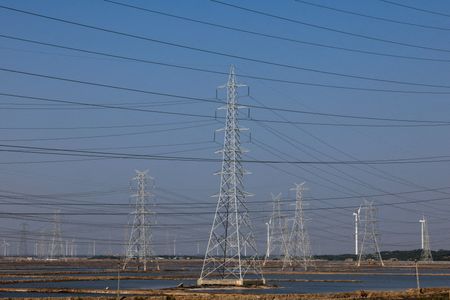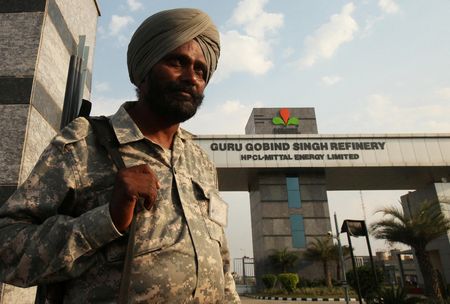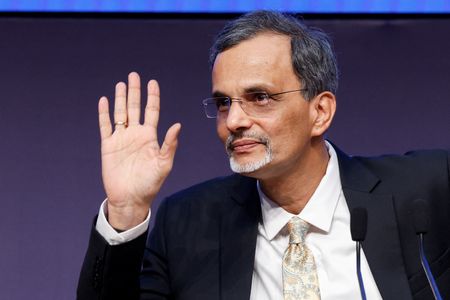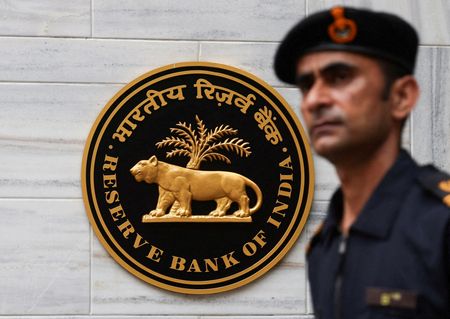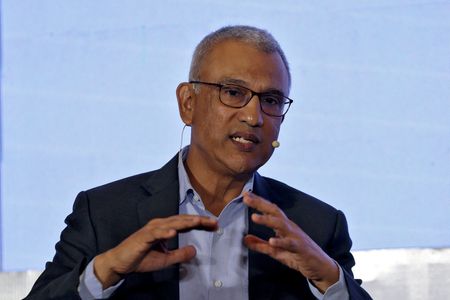By Sarita Chaganti Singh, Sethuraman N R and Nikunj Ohri
NEW DELHI (Reuters) -India is considering a bailout exceeding 1 trillion rupees ($12 billion) for debt-laden state-run power distribution companies.
To receive the bailout funds, the states will be required to privatise their electric utilities and transfer managerial control or keep control but list them on a stock exchange, according to three government officials and a document outlining the plan prepared by the Indian Ministry of Power.
The plan marks Prime Minister Narendra Modi’s toughest reform push yet to overhaul the chronically inefficient state-run electricity distribution companies, seen as the weakest link in India’s energy chain.
The Power Ministry and the Ministry of Finance are discussing the final details of the bailout, with an announcement expected in the February budget, said two of the government sources.
The ministries did not immediately respond to Reuters’ requests for comments.
Under the proposal, at least 20% of the state’s total power consumption must be met by private companies and the states must assume part of the retailer’s debt, according to the Power Ministry presentation.
To do so the states can choose to privatise their distribution operations for access to loans to pay off existing debt under two options.
First, the states can create a new distribution company, divest 51% of the equity, which will enable them to access a 50-year interest-free loan for the privatised company’s debt, along with access to low-interest federal loans for five years, the presentation showed.
The second option would let states privatise up to 26% of the equity of an existing state-owned power distribution company in exchange for access to low-interest loans from the federal government for five years, it showed.
Alternatively, states that do not decide to transfer managerial control through privatisation must list their utilities on a recognised stock exchange within three years.
States that choose to list would receive low-interest loans from the federal government for infrastructure management, the presentation showed.
DEBT AND LOSSES
The state power retailers have accumulated losses of 7.08 trillion rupees ($80.6 billion) and outstanding debt of 7.42 trillion rupees ($84.4 billion) as of March 2024, the document showed.
Despite three federal bailouts worth billions of dollars over two decades, state-run power distributors remain financially strained, unable to recover costs due to deeply subsidised tariffs.
Private companies such as Adani Power, Reliance Power, Tata Power, CESC and Torrent Power are expected to benefit from the reforms as they are likely to gain stakes in the state companies.
Past efforts to privatise India’s state-run power distribution firms have faced resistance from employees and opposition parties, which has stalled reforms.
“Privatisation is much needed to improve both financial and operational metrics of many power distribution companies. However, this move could face some resistance and will require strong political will,” said Debabrat Ghosh, Head of India, Aurora Energy.
Only a handful of distribution zones — including national capital Delhi and industrial states like Maharashtra and Gujarat — are privatised.
The government is working on amending the law in the next parliament session to allow private firms to use existing state-run networks.
($1 = 87.8950 Indian rupees)
(Reporting by Sarita Chaganti Singh, Nikunj Ohri and N R Sethuraman; Editing by Christian Schmollinger)

